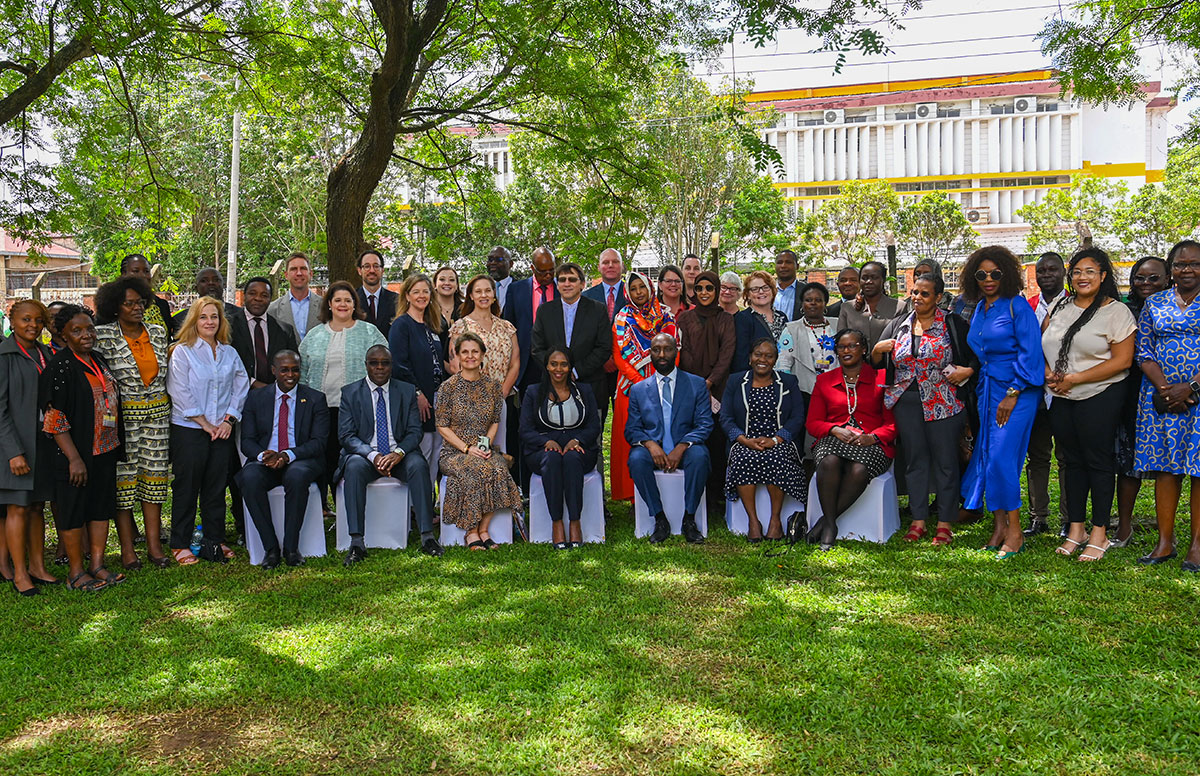For Minnesota aging services providers, some of whom already have experience recruiting foreign-born nurses, a new initiative is creating possibilities to boost the pipeline of nurses from Kenya, to help fill the serious gaps caused by chronic workforce shortages in the U.S.
A delegation of providers from LeadingAge Minnesota traveled to Nairobi in January 2024 to attend the opening of a new National Council Licensure Examination (NCLEX) training center. The new Pearson VUE test center, which can accommodate at least 3,000 candidates per year, is significant to aspiring Kenyan nurses: Prior to its opening, those students would have had to travel over 2,000 miles to Johannesburg, South Africa—or possibly England or India—at their own expense, to complete their mandatory testing before beginning their international nursing careers. The new testing center should reduce exam costs by 50%, according to the Kenyan Ministry of Health.
Rep. Mohamud Noor, a Minneapolis-area member of the Minnesota House, collaborated with the State Department of Diaspora Affairs in Kenya and Pearson Vue, headquartered in Bloomington, MN, to establish the center, and led the Minnesota health providers to visit. “It is no secret that our country is aging. Minnesota alone has more than one million seniors, and we need skilled, compassionate caregivers to meet the growing demand for care,” said Rep. Noor. “Foreign-born workers play a vital role in ensuring that seniors have access to the care they need, at the right time and in the right place. Caregivers from around the globe are a valuable and indispensable part of our strategy to maintain health care communities while elevating them as centers of excellence and inclusivity.”
While in Nairobi, the group gained a deeper understanding of the Kenyan health care education system, met with employment agencies, and toured local medical and care providers. See this State Department video about the tours. LeadingAge Minnesota notes that Kenya wants to be a global partner in addressing health care shortages, and that Kenyan nurses working abroad send substantial remittances home, amounting to 3% of Kenya’s gross domestic product.
Anna Mowry, director of workforce solutions for LeadingAge Minnesota, says some providers with the January delegation have since made additional trips to Kenya, building contacts and partnerships with organizations that recruit nurses who are eager to launch their international nursing careers. One group of members has been working with APEX Global Health and Tech Solutions, a Nairobi-based nursing recruitment company, while others are working with WorldWide HealthStaff Solutions, which has multiple international offices.
Benedictine Living Communities, which operates 34 communities in five states, has done targeted recruitment of international nurses with WorldWide HealthStaff for eight years, bringing 190 RNs to the U.S., says Kathleen Murray, director, workforce solutions of the Fridley, MN-based organization. As part of the January delegation to Nairobi, Murray interviewed 15 registered nurse candidates while she was there. Of the 12 offers she made, six were accepted. Now begins the long process, typically 18–24 months, of bringing the nurses to the United States on EB-3 visas.
When new international arrivals join Benedictine’s staff, the organization ensures that mentors, access to community services, schools for their children, and other services are available once onsite. Murray, who is also working to bring 50 Kenyan nurse aides to its North Dakota communities, leveraging that state’s reimbursement program to providers who recruit international nurses, says the international nurses also support each other. “There’s a strong network,” she says. “They tend to live together in the same apartment buildings. They socialize together. They really do a lot [for each other] on their own.”
Mowry says Minnesota’s Kenyan population is the largest, per-capita, of any state. “There are many Kenyans already within our workforce,” she says, “so a lot of providers are passionate about sponsoring and supporting the family members of their employees who are already here. We want to help strengthen providers’ connections with candidates abroad and make the most of long visa wait times by encouraging them to engage with the local community and find meaningful ways they can give back.”
Photo: LeadingAge Minnesota members and staff, along with staff from the Kenyan Dept. of Diaspora Affairs, during their visit to the Kenya Medical Training College in Nairobi in January 2024. Minnesota State Rep. Mohamud Noor (seated, third from right), led the Minnesota delegation on its visit. Photo courtesy of LeadingAge Minnesota.
Does your organization recruit staff from overseas? How do you welcome, support, and retain immigrant employees? What challenges have you overcome to integrate foreign-born staff into your workplace and community? Use the LeadingAge Story Collector, powered by Greystone, to tell us your story. Try it now.

 Shutdown Week Three: Impact of Ongoing Closure on Affordable Housing
Shutdown Week Three: Impact of Ongoing Closure on Affordable Housing RHT Program Awards: All 50 States To Receive Funds, Says CMS
RHT Program Awards: All 50 States To Receive Funds, Says CMS CMS Publishes Draft OASIS-E2 Guidance Manual
CMS Publishes Draft OASIS-E2 Guidance Manual CMS Debuts Models: ACCESS, ELEVATE and LEAD
CMS Debuts Models: ACCESS, ELEVATE and LEAD


